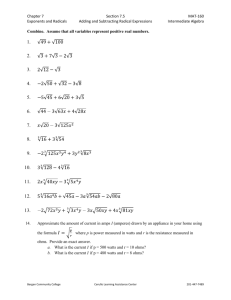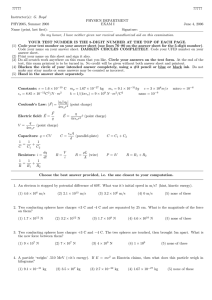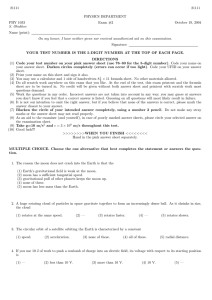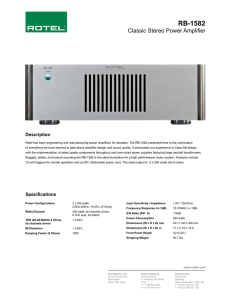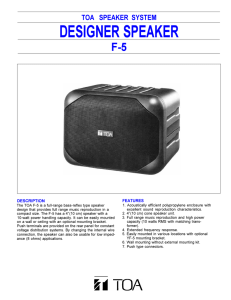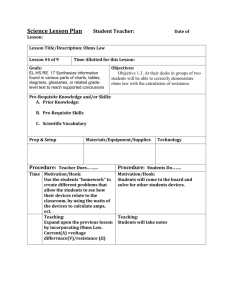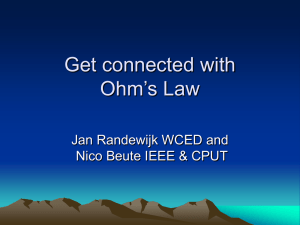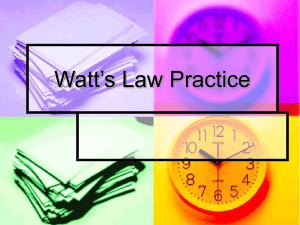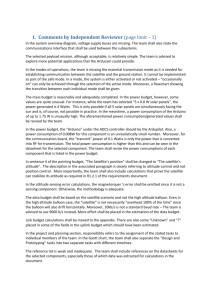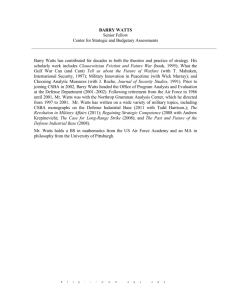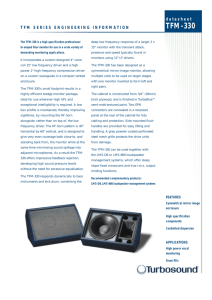77777 PHYSICS DEPARTMENT PHY 1033 Exam 2
advertisement
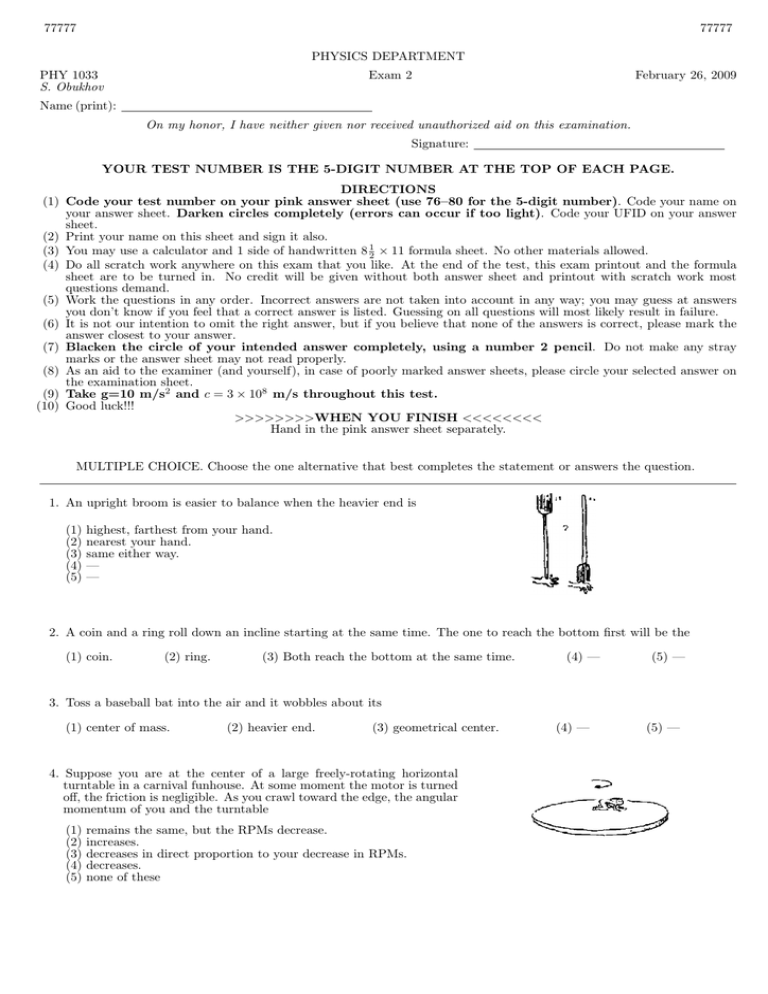
77777 77777 PHYSICS DEPARTMENT PHY 1033 S. Obukhov Exam 2 February 26, 2009 Name (print): On my honor, I have neither given nor received unauthorized aid on this examination. Signature: YOUR TEST NUMBER IS THE 5-DIGIT NUMBER AT THE TOP OF EACH PAGE. DIRECTIONS (1) Code your test number on your pink answer sheet (use 76–80 for the 5-digit number). Code your name on your answer sheet. Darken circles completely (errors can occur if too light). Code your UFID on your answer sheet. (2) Print your name on this sheet and sign it also. (3) You may use a calculator and 1 side of handwritten 8 21 × 11 formula sheet. No other materials allowed. (4) Do all scratch work anywhere on this exam that you like. At the end of the test, this exam printout and the formula sheet are to be turned in. No credit will be given without both answer sheet and printout with scratch work most questions demand. (5) Work the questions in any order. Incorrect answers are not taken into account in any way; you may guess at answers you don’t know if you feel that a correct answer is listed. Guessing on all questions will most likely result in failure. (6) It is not our intention to omit the right answer, but if you believe that none of the answers is correct, please mark the answer closest to your answer. (7) Blacken the circle of your intended answer completely, using a number 2 pencil. Do not make any stray marks or the answer sheet may not read properly. (8) As an aid to the examiner (and yourself), in case of poorly marked answer sheets, please circle your selected answer on the examination sheet. (9) Take g=10 m/s2 and c = 3 × 108 m/s throughout this test. (10) Good luck!!! >>>>>>>>WHEN YOU FINISH <<<<<<<< Hand in the pink answer sheet separately. MULTIPLE CHOICE. Choose the one alternative that best completes the statement or answers the question. 1. An upright broom is easier to balance when the heavier end is (1) (2) (3) (4) (5) highest, farthest from your hand. nearest your hand. same either way. — — 2. A coin and a ring roll down an incline starting at the same time. The one to reach the bottom first will be the (1) coin. (2) ring. (3) Both reach the bottom at the same time. (4) — (5) — 3. Toss a baseball bat into the air and it wobbles about its (1) center of mass. (2) heavier end. (3) geometrical center. 4. Suppose you are at the center of a large freely-rotating horizontal turntable in a carnival funhouse. At some moment the motor is turned off, the friction is negligible. As you crawl toward the edge, the angular momentum of you and the turntable (1) (2) (3) (4) (5) remains the same, but the RPMs decrease. increases. decreases in direct proportion to your decrease in RPMs. decreases. none of these (4) — (5) — 77777 77777 5. Stand a meter stick on its end and let go and it rotates to the floor. If you attach a heavy weight to its upper end and repeat, falling time will be (1) more. (2) less. (3) the same. (4) — (5) — 6. Consider two planets in space that gravitationally attract each other. If the masses of both planets are doubled, and the distance between them is also doubled, then the force between them is (1) none of these (2) one quarter. (3) half as much. (4) four times as much. (5) twice as much. 7. Two objects move toward each other because of gravity. As the objects get closer and closer, the acceleration of each (1) increases. (2) remains constant. (3) decreases. (4) — (5) — 8. Bonus Question Each of us weighs a tiny bit less inside the ground floor of a skyscraper than we do on the ground away from the skyscraper. The reason for this is the A) gravitational field is shielded inside the building. B) mass of the building attracts us upward slightly. (1) B (2) A (3) both of these (4) neither of these (5) — 9. Which is most responsible for the ocean tides? (1) the moon (2) the sun (3) Both contribute equally. (4) — (5) — 10. An airplane travels at 141 km/h toward the northeast. What is its component of velocity due north? (1) 100 km/h (2) 41 km/h (3) 110 km/h (4) 141 km/h (5) — 11. A projectile is fired horizontally in a region of no air resistance. The projectile maintains its horizontal component of velocity because (1) (2) (3) (4) (5) it is not acted on by any horizontal forces. it has no vertical component of velocity to begin with. it is not acted on by any forces. the net force acting on it is zero. none of these 12. A bullet is fired horizontally with an initial velocity of 300 m/s from a tower 20 m high. If air resistance is negligible, the horizontal distance the bullet travels before hitting the ground is about (1) 600 m. (2) 200 m. (3) 500 m. (4) 300 m. (5) 400 m. 13. The period of a satellite, the time it takes for a complete revolution, depends on the satellite’s A. mass. B. weight C. radial distance (1) C (2) B (3) A (4) A, B and C (5) none of these 77777 77777 14. A satellite near the Earth makes a full circle in about an hour and a half. How long would a satellite located as far away as the moon take to orbit the Earth? (1) (2) (3) (4) (5) about 28 days less than an hour and a half the same hour and a half More information about the satellite is needed. none of these 15. A rocket fired vertically at 11.2 km/s will escape the Earth. If it is instead fired horizontally at this speed, free from obstructions, will it still escape the Earth? (1) Yes (2) No (3) There’s no way to tell. (4) — (5) — 16. A balloon will stick to a wooden wall if the balloon is charged (1) (2) (3) (4) (5) either positively or negatively. negatively. positively. None of these — 17. Electric potential, measured in volts, is the ratio of electric energy to amount of electric (1) charge. (2) resistance. (3) voltage. (4) current. (5) None of these. 18. A conductor differs from an insulator in that a conductor (1) (2) (3) (4) (5) none of these has faster moving molecules. has more protons than electrons. has more energy than an insulator. has more electrons than protons. 19. You can touch a 100,000-volt Van de Graaff generator with little harm because although the voltage is high, the relatively small amount of charge means there is a relatively small amount of (1) energy. (2) electric field. (3) polarization. (4) conduction. (5) — 20. When a single charge q is placed on one corner of a square, the electric field at the center of the square is F/q. If three other equal charges are placed on the other corners, the electric field at the center of the square due to these four equal charges is (1) None of these (2) F/(4q). (3) F/q. (4) 4F/q. (5) F/(2q). 21. When a 10-V battery is connected to a resistor, the current in the resistor is 2 A. What is the resistor’s value? (1) 5 ohms (2) 20 ohms (3) 10 ohms (4) 2 ohms (5) more than 20 ohms 22. The electric power of a lamp that carries 2 A at 120 V is (1) 240 watts. (2) 60 watts. (3) 20 watts. (4) 2 watts. (5) 1/6 watts. 77777 77777 23. A 100-Watt lamp glows brighter than a 25-Watt lamp. The electrical resistance of the 100-Watt lamp must be (1) less. (2) greater. (3) the same. (4) — (5) — 24. An iron nail is more strongly attracted to the (1) north or south pole – no difference really. (2) south pole of a magnet. (3) north pole of a magnet. (4) — (5) — 25. Moving electric charges will interact with (1) an electric field or a magnetic field. (2) only an electric field. (3) only a magnetic field. (4) none of these (5) — 26. Magnetic field lines about a current-carrying wire A) extend radially from the wire. B) circle the wire in closed loops. (1) B (2) A (3) none of these (4) both A and B (5) —
